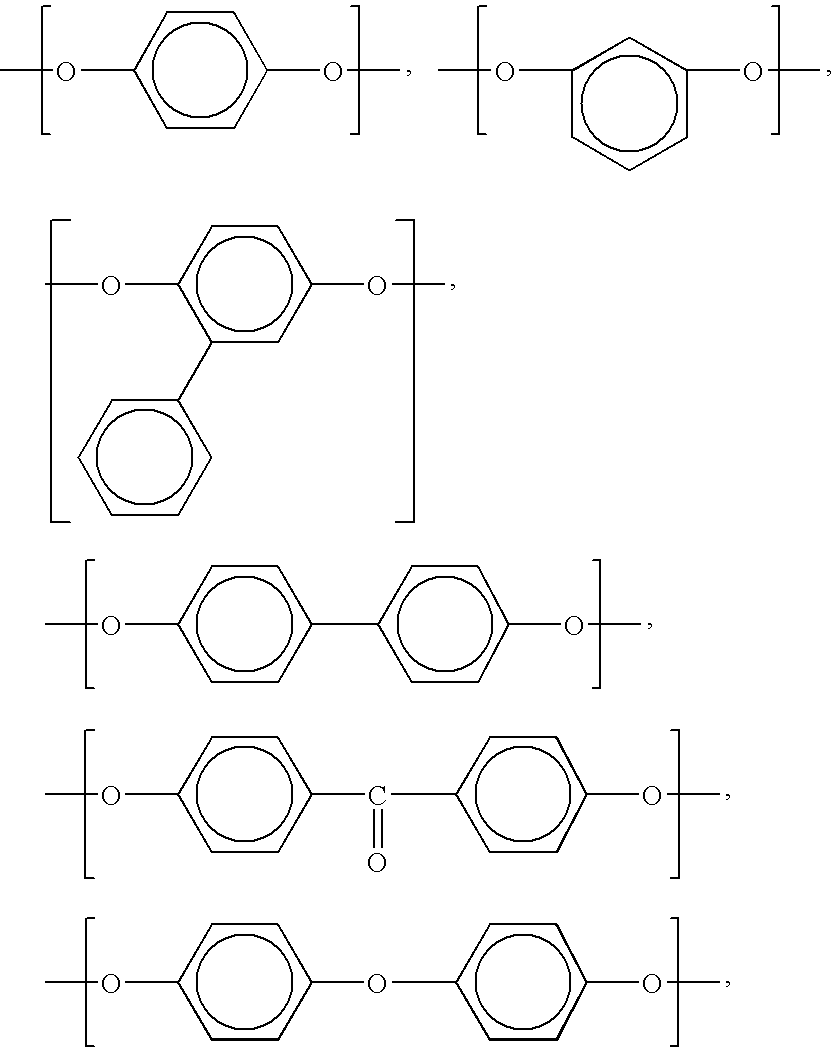Method for producing aramid laminate
a technology of aramid laminate and aramid powder, which is applied in the field of aramid laminate, can solve the problems of warpage, reduced electric reliability of electronic parts packaged on printed circuit boards, and further difficulty in circuit wiring procession, and achieve excellent solder heat resistance
- Summary
- Abstract
- Description
- Claims
- Application Information
AI Technical Summary
Benefits of technology
Problems solved by technology
Method used
Image
Examples
example 1
[0129] At a blending ratio of 82 parts by weight of A-1 and 18 parts by weight of B-1, melting and kneading was performed at a cylinder set temperature of 350° C. under a screw rotation number of 450 rpm using a TEX-30 type biaxial extruder manufactured by The Japan Steel Works, Ltd. to obtain a composition in which A-1 is a continuous phase, and B-1 is a dispersion phase. This composition pellet exhibited optical anisotropy at 340° C. or higher under pressure, and a flowing temperature was 328° C. The resulting composition is called C-1 in some cases.
[0130] C-1 was melted and extruded at a cylinder set temperature of 350° C. under a screw rotation number of 60 rpm using a 60 mmφ monoaxial extruder equipped with a cylinder die, a melted resin was extruded upwardly from a cylindrical die of a diameter 50 mm, a lip interval 1.0 mm and a die set temperature 348° C., the dried air was pressed in a hollow part of the resulting cylindrical film, this was inflated, cooled, and passed thro...
example 2
[0135] P-1 and F-1 obtained in Example 1, and electrolytic copper foil M-1 of a thickness of 18 μm were overlaid in an order of (i) to (v) such as (i) M-1, (ii) F-1, (iii) P-1, (iv) F-1 and (v) M-1, and passed through a calendar roll set at 325° C. (a temperature of a flowing temperature of C-1 minus 3° C.) at a linear pressure of 50 kg / cm to obtain a laminate L-2 having an average actual measured thickness of 112 μm. A simple circuit having a copper foil residual area rate of 20% was made on a copper foil on both surfaces of L-2 by conventional etching treatment to obtain a double-sided circuit substrate B-1. A water absorption rate of B-1 was better as 0.8%. In addition, the substrate was immersed in a solder bath adjusted at 280° C. for 10 seconds and deformation was not recognized, and appearance was also better. In addition, after immersion in a solder bath, breakage of a circuit is not recognized.
PUM
| Property | Measurement | Unit |
|---|---|---|
| temperature | aaaaa | aaaaa |
| temperature | aaaaa | aaaaa |
| mol % | aaaaa | aaaaa |
Abstract
Description
Claims
Application Information
 Login to View More
Login to View More - R&D Engineer
- R&D Manager
- IP Professional
- Industry Leading Data Capabilities
- Powerful AI technology
- Patent DNA Extraction
Browse by: Latest US Patents, China's latest patents, Technical Efficacy Thesaurus, Application Domain, Technology Topic, Popular Technical Reports.
© 2024 PatSnap. All rights reserved.Legal|Privacy policy|Modern Slavery Act Transparency Statement|Sitemap|About US| Contact US: help@patsnap.com










